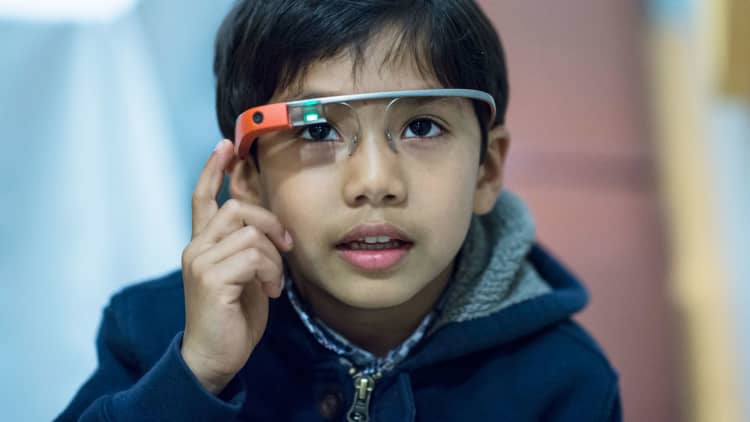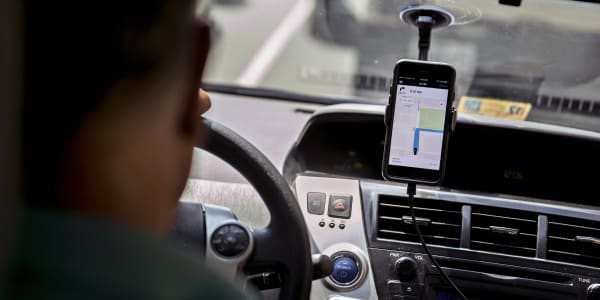
One in 68 children in the U.S. has autism spectrum disorder and it is the fastest-growing developmental disability in the U.S., according to the Centers for Disease Control and Prevention.
Early intervention and behavioral therapy are key, but the number of therapists is not keeping up with the increase in diagnosis, so many parents are waiting months for much needed help for their children.
This is what motivated a team at Stanford University's Wall Lab to create a therapy device for children with autism that could be used at home. The technology, called the Autism Glass Project, uses facial recognition software and runs on Google Glass. It can read facial expressions and gives the user cues as to what emotion they are seeing.
Catalin Voss, founder of the Autism Glass Project, said that typical behavioral therapy teaches children emotions by using flashcards.
"But that doesn't always translate to real-life situations," he said. "Our idea was to try to build a more holistic aid that enables the user to recognize social cues when they actually need to receive those cues right then and there."
Google donated 35 Google Glass headsets to Stanford for the project, but because it has discontinued production of the hardware, it is not clear if the company will continue to support the project. Voss said the software could work on any augmented reality hardware.
The project has been in development for two years, and has been tested on more than 100 children with autism. The group recently gave the device to 24 families for in-home trials.
Ronny Yang from Saratoga, California, said she saw drastic improvements in her 16-year-old autistic son, Justin, after two months of practicing with the device.
Justin would wear the device each day for short sessions where he would interact with family members face to face — talking and playing games. The program runs on a smartphone, which records the sessions.
When the device's camera detects an emotion such as happiness or sadness, Justin sees a color or a corresponding emoji flash on the glass display indicating which emotion he is seeing.
Yang said she watched Justin improve each day of the trial and he now makes more eye contact than ever before. Justin has also gotten better at verbalizing what emotion he is feeling, whereas in the past, he would often just have a tantrum.
At the moment, the device needs to be programmed to read a specific person's face, but the team at Stanford is working toward broadening the technology so it can translate everyone's facial expressions.
Yang said she would like to see the technology improve so Justin could wear the device out in public as that is where he is often most confused by the others around him.
The Autism Glass team's goal is to release the technology as a reimbursable medical product as early as next year.
"The goal is to make something that can reach families at large in areas where wait times for behavioral therapists are 36 months," Voss said.
The next step for the team is to continue clinical trials to prove that the technology works. A randomized control trial of 50 participants will begin this fall. Voss said the feedback from the families who have used the device so far has been very promising.





